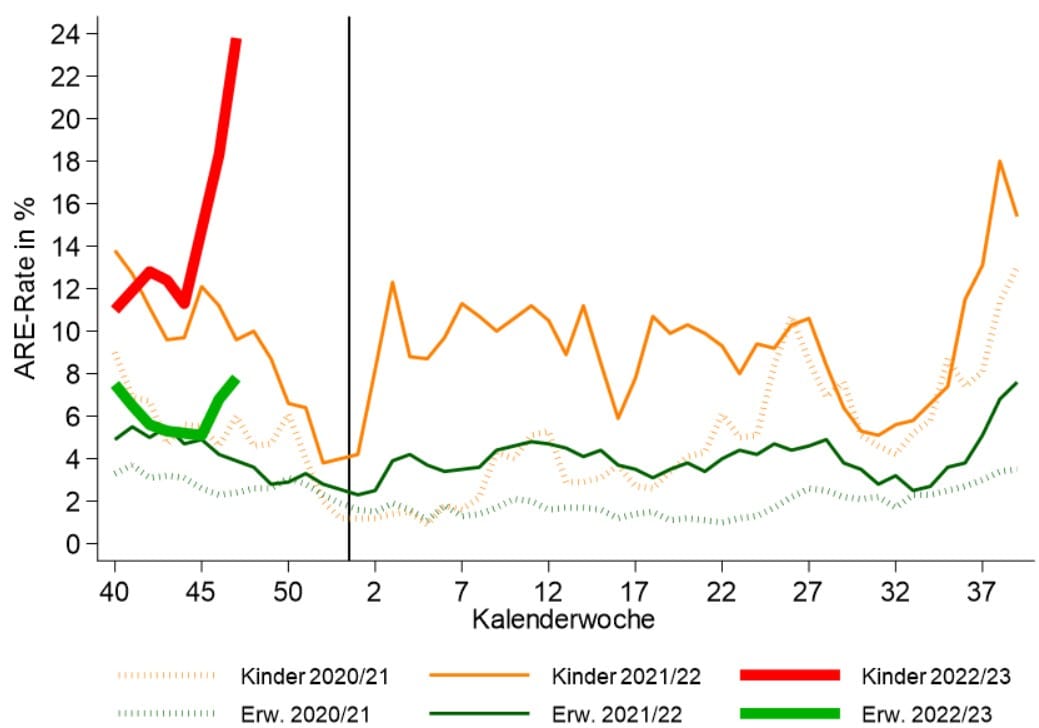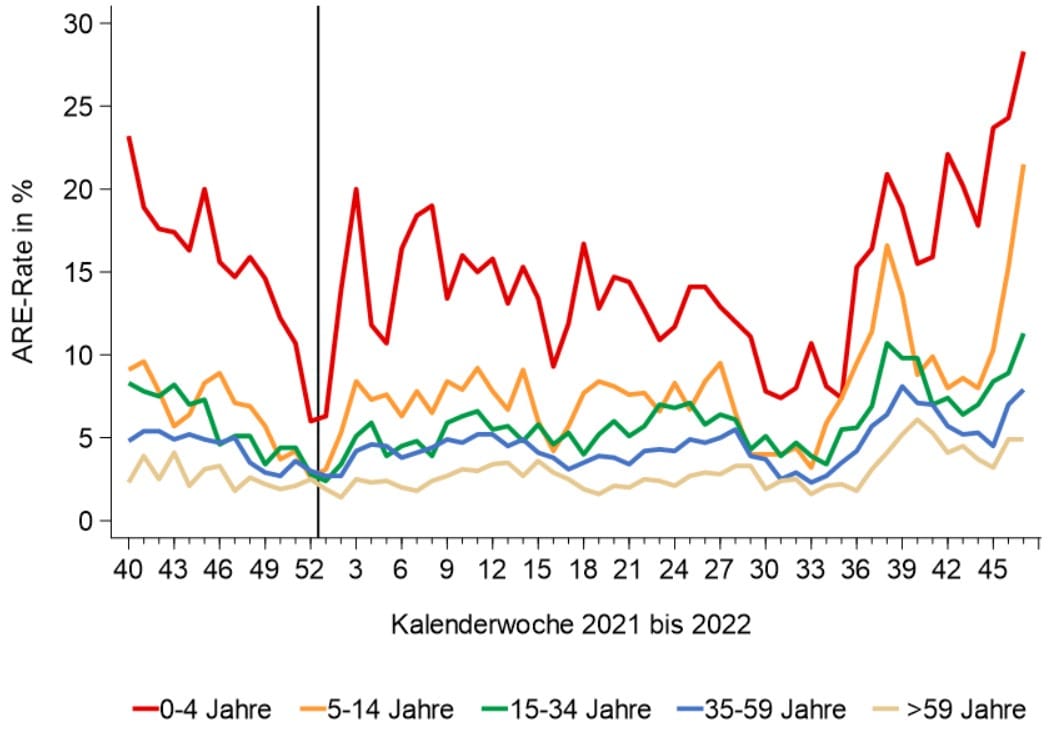Table of Contents
There is life after Covid, and our health authorities should consider other public health crises besides Covid. The current surge in RSV infections has resulted from extended lockdowns preventing us from developing natural immunity from the spread of the usual winter viruses.
According to University of Otago epidemiologist Prof. Michael Baker, lockdowns were crucial to achieving zero Covid. Baker applauded Ardern’s Zero Covid (elimination) approach, saying it gave us “unparalleled levels of freedom”. Baker must exist in a parallel universe because there wasn’t much freedom at my house, but then, we aren’t vaccinated.
“The fact we got through those first two years with very little health impact in New Zealand, very few deaths, is because we initially eliminated the virus and then we suppressed it very effectively.”
1 News
We suppressed Covid but only for a time, delaying the inevitable, waiting patiently for the vaccine to arrive and be distributed. Despite the hype, the promise of zero Covid drifted into oblivion when it became clear the vaccine did not prevent transmission, hospitalisation or death from Covid.
Vaccination was an unmitigated (and expensive) disaster.
Imagine what could have been done with $62 billion applied to treating Covid cases before they became critically ill? Hint: I’ve just finished reading“The Courage to Face Covid-19: Preventing Hospitalisation and Death While Battling the Bio-Pharmaceutical Complex by John Leake and Peter A McCullough MD. It’s full of stories about people snatched from the brink of Covid death by courageous doctors who defied medical institutions to use repurposed, safe and cheap medications. A highly recommended and informative read.
But back to the current health crisis. Baker is an epidemiologist, which means he studies the causes, transmission and distribution of diseases in population groups to inform public health programmes and prevent the spread of disease.
Baker must be familiar with severe respiratory syncytial virus (RSV) that is sweeping the world but he did not warn that lockdowns would stifle the development of natural immunity resulting from exposure to seasonal viruses.
And so here we are with a health crisis affecting the most vulnerable – the elderly and the very young, including babies who receive natural immunity through breast milk, but because their mothers were not exposed to the usual viruses their babies did not acquire immunity to the RSV that started spreading in NZ around July and are currently spreading around the world.
Sweden expects a tough time ahead for their children.
Swedish experts have warned of a tough Respiratory Syncytial Virus (RSV) season this winter in the country as the number of infections kept increasing recently.
“Right now there are quite a lot of children being cared for with RSV”, said Malin Ryd Rinder, head of the children’s intensive care unit at Astrid Lindgren’s children’s hospital.
She told the Swedish daily Dagens Nyheter (DN) on Sunday that the RSV season already started in the country a few weeks ago and there could be a tough time ahead.”
In the US during November the Orange County health authority declared a state of emergency following record numbers of paediatric hospitalizations for respiratory infections. In Maryland, emergency rooms ran out of beds because of the unusually high number of severe respiratory syncytial virus, or RSV, infections.
In the US, the winter respiratory virus season started earlier than usual this year. Since peak infections usually occur in late December or January, this uncharacteristic early wave suggests that the situation could get much worse for people of all ages, particularly children.
The Star
The CDC warned about looming respiratory illness, the “triple threat” of flu, RSV and Covid-19.
There are a few reasons why the U.S. may be seeing a surge in paediatric respiratory infections. First, COVID-19 protection strategies actually help prevent the transmission of other respiratory pathogens. School and day care closures likely also minimized exposures children normally have to various respiratory viruses.
These and other efforts to prevent the spread of COVID-19 seem to have suppressed the broad circulation of other viruses, including influenza and RSV. As a result, the U.S. saw an overall drop in non-COVID respiratory infections – and an almost non-existent flu season in the winter of 2020.
The decreased viral activity means that children missed out on some exposures to viruses and other pathogens that typically help build immunity, particularly during the first few years of life. The resulting so-called “immunity debt” may contribute to an excess of paediatric respiratory infections as we continue into this season.
To further complicate the picture, the changing nature of viruses, including the emergence of new COVID-19 variants and the natural evolution of seasonal influenza viruses, means that we could be seeing a unique combination of particularly transmissible strains or strains that cause more severe illness.
The Conversation
Swings and roundabouts. What’s the point of celebrating your child not catching Covid if an RSV virus puts them in the hospital or kills them?
The same thing is happening in Germany where Eugyppius reports The German Fever Gauge, Grippe Web, suggests nearly one in four German children under 15 is currently suffering some kind of respiratory infection.
For every action there is a reaction and years of government interventions in the form of lockdowns, school and childcare closures and the vaccine mandates that depleted available healthcare workers have created an unwelcome, but highly predictable, scenario.

The rate is especially high among children under four, a demographic that has seen elevated rates of illness for over a year now.

This isn’t just the vaccines (almost no children under 5 have been vaccinated), and it’s not just a coincidence or a bad year for RSV either. It’s a direct consequence of mass containment. While lockdowns didn’t do much about SARS-2, they appear to have reduced the incidence of other, slower moving viruses considerably. Young women in particular have been underexposed to RSV for three years now with the result that their breast milk confers far less passive immunity against common viruses than it did in the pre-pandemic era.
Adults are supposed to get mild upper respiratory infections once in a while. If they don’t, their infants will get them instead, and some of them will die.
Eugyppius
A Canadian study reports on the near-disappearance of respiratory syncytial virus (RSV) during the first year of the coronavirus disease 2019 (COVID-19) pandemic.
Over this corresponding period, reporting a reduction in RSV antibody levels and live virus neutralization in sera from women of childbearing age and infants between May to June 2020 and February to June 2021, in British Columbia (BC), Canada. This supports that antibody immunity against RSV is relatively short-lived and that maintaining optimal antibody levels in infants requires repeated maternal viral exposure. Waning immunity may explain the interseasonal resurgence of RSV cases observed in BC and other countries.
Another study hypothesized that the absence of exposure to the virus might result in lower antibody levels in human milk during the pandemic and, subsequently, decreased protection of infants against viral respiratory tract infections.
Our fixation on Covid-19 should not have precluded health officials from evaluating other important health issues – the likely outcomes of Covid health policies.









